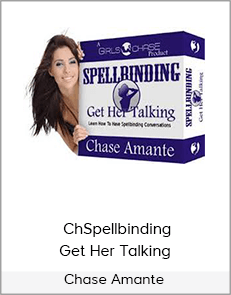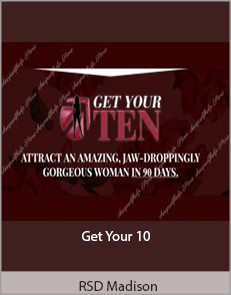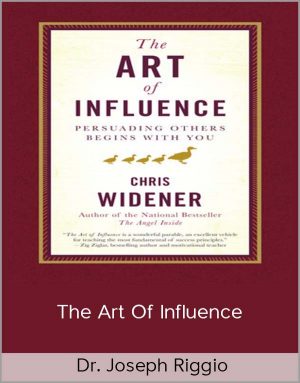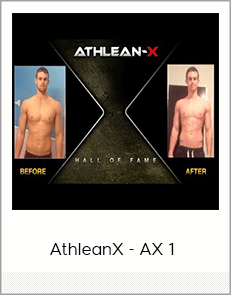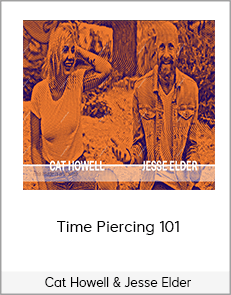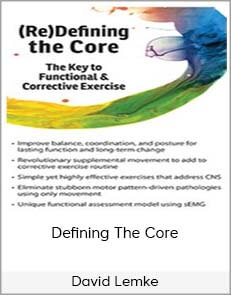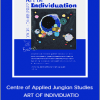Centre of Applied Jungian Studies – ART OF INDIVIDUATIO
$70.00$390.00 (-82%)
The expression can be done in any artistic form you choose, visual, dramatic, movement, musical or written. Irrespective of the form of expression, this artwork will be accompanied by a written statement of intent.
SalePage
Centre of Applied Jungian Studies – ART OF INDIVIDUATIO
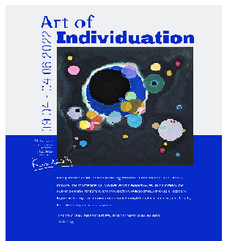
Check it out: Centre of Applied Jungian Studies – ART OF INDIVIDUATIO
Lecture Series
Art of Individuation by Stephen Anthony Farah, MA
The Artist and Their Objects by Peter Merritt Dobey
Art as a Path of Inner Schooling by Cyril Coetzee
The Portable Metaphysic of Art: Eros and the Feminine in the Transdisciplinary Quest for Meaning and Being by Susan Rowland, PhD
A very, very brief history of Western Art by Hugo Virgil Frey
Expressionism in Contemporary Art by Prof. John Rapko
My Fifty Some Year Journey with the Work of Blake and Jung by Prof. Joseph Natoli
Mummy where do we begin and end? by Jane McAdam Freud
International movements, local art and personal agency: Art in the formation of identity by Sinazo Chiya
World Worlding by Mark Rautenbach
The Art of Individuation Application
A guided process for the eight-weeks of the programme, giving expression to your unconscious psyche through an artistic process. The expression can be done in any artistic form you choose, visual, dramatic, movement, musical or written. Irrespective of the form of expression, this artwork will be accompanied by a written statement of intent. This will culminate with your artwork being shared with the student and facilitation group on the student forum. All graduates’ artworks will be curated and displayed in a purpose designed virtual gallery set up on the Applied Jung website.
Programme Details
4 pm London time/ 11 am New York time. All lectures are recorded and made available to view afterwards.
Students are welcome to watch the lectures and engage on the confidential Facebook forum without participating in the Art of Individuation Application. However, certification will be only be rewarded to students who submit their final artwork.
START DATE /
Saturday 9 April 2022
REGISTRATION CLOSES /
Thursday 7 April 2022
PROGRAMME DURATION /
8 Weeks
PROGRAMME FEE /
$390 single payment or $150 per month for 3 months
Abstracts
Art of Individuation / by Stephen Anthony Farah, MA
Art of Individuation: Art is the quintessential expression of the psyche and its desire for being. Through the artistic process the artist explores the questions of meaning, expression, and being. Art symbolises and through such symbolisation, represents the unconscious to reveal what was previously hidden from view. Art is a creative and generative act giving birth to something new, whilst, simultaneously, refining and reifying the psyche, continually seeking more congruent expression. Individuation arises out of a similar creative impulse. Individuation is an ongoing attempt by the subject to find ever more congruent, refined, and reified symbolic expressions of her unconscious psyche. The artist brings being into existence and into the world through her art. The individuating subject expresses her artistic impulse through her being in the world. Both are vehicles and modes of giving expression to the unconscious psyche through the creative imagination, and thereby facilitating the realisation of the Jungian “Self” or Blake’s “Regenerated Man”.
Art as a path of inner schooling: The influence of Rudolf Steiner and his artistic impulse on early Modernism / by Cyril Coetzee
Early Modernist art and the spiritual crisis in western culture resulting from scientific progressivism and analytical reductionism. The search for a new basis on which to spiritualise Modern art. The birth of Abstract Art and the quest for the ‘Fourth dimension’. The widespread influence of Theosophy on Kandinsky and many other pioneers of Abstract painting such as Münther, Malevich, Mondrian, Kupka and Klint. Kandinsky’s key ideas, including that of the ‘epoch of the great spiritual’ were sourced in the ‘Rosicrucian alchemical’ Theosophy (later called Anthroposophy) of Rudolf Steiner, apparent both in Kandinsky’s writings and in his notion of four progressive steps leading to complete spiritual abstraction. These steps echo Steiner’s interpretation of the principle four alchemical ‘stages of higher knowledge’. Goethe’s alchemical studies, his ‘Fairy tale of the green snake…’ and ‘Theory of colours’ were primary sources for Steiner’s art impulse, as manifest in his two ‘Goetheanum buildings, intended to be modern ‘Mystery Temples’ .The related ideal of the ‘total art
work’( Gesamptkunstwerk) in the context of Steiner’s Theosophical conception of the 7 ‘bodies’ as constitutive of the complete human being as presented in Steiner’s lecture series: ‘Art in the light of Mystery Wisdom’ and ‘‘The arts and their mission’. Steiner’s little known painting pupils: Werefkin, Linde, Geck and Rosencrantz and their pioneering initiative to meditatively deepen painting as a ‘path of inner schooling’. The various characteristics of this new impulse in painting and how it was intended to lead consciousness across the ‘threshold of the spiritual world’. Practical painting exercises given by Steiner and how we can practice them.
The Artist and their Objects / by Peter Merritt Dobey
Art making for an authentic artist is inseparable from their life, and though it can be taken away, it probably shouldn’t be. More than an activity, it is a mode of lived expression impossible to separate from the authentic artist, of problem solving and puzzle making, and crucially, as an internalized object that becomes externalized. Artistic expression then is not just a matter of representation or of “getting it out” but an act that quite literally allows one to exist. Through examples from my clinical practice with artists, and taking a look at Lacan’s treatment of the art making process of James Joyce and the Lacanian concept of “Le Sinthome”, I will argue for the importance of leaving an artist’s symptoms intact, but allowing them to be utilized. Along the way I will explore historical considerations of art making as being symptomatic, if such phenomena are to be “treated”, and will illustrate through clinical vignettes how the symptomatic artmaking process should be thought of as a model for everyone to make use of, and not remedy, one’s symptoms.
My Fifty Some Year Journey with the Work of Blake and Jung / by Prof. Joseph Phillip Natoli
I propose to talk about William Blake and Carl Jung within four contexts. Both saw a path to fulfilment, Jung’s individuation leading to The Self and Blake’s Regenerated Man, through a never ending dynamic or dialectic of opposites or what Blake called in the Marriage of Heaven and Hell, contraries.
I begin again: The Blakean notion that the reality we now live in was first imagined spurred my interest in a phenomenological psychotherapy acknowledging the different existences fashioned by not only those in therapy but those who describe those differences to the analysand.
A third context: The hyper and hyped consciousness of the postmodern world in which hyper- refers to the self-reflexivity of consciousness, a jumping back on our own reality making ways, while hyped- refers to the impact of spin, spectacle, and commodification on consciousness.
Post-truth context: Blake and Jung within the context of a post-truth world, a kind of debasement of postmodern views, itself a Fall into a demotic cyberspace chaos in which the lens of perception is that of a selfie. A look inward that goes no deeper than a toothy smile.
To begin the last time: On December 5th, 2020, wife died. This is the pre- eminent context of all my thinking now. I am intrigued by the notion that archetypes bear within them traces of every life lived, a kind of Platonic metempsychosis in which all souls are reborn within each new soul born.
The Portable Metaphysic of Art: Eros and the Feminine in the Transdisciplinary Quest for Meaning and Being / by Susan Rowland, PhD
Building on Stephen Farah’s framework and focusing on the hyper-modern pst 1995 era, my talk will explore the emergence of what could be termed an Eros or feminine metaphysic (from Jung and transdisciplinarity) into a new multicultural, multi-religious, diverse and sacred practice. I will draw on my recent book, Jungian Arts-Based Research and the Nuclear Enchantment of New Mexico. This material will directly address the role of nuclear weapons in the dissolution of metaphysical logocentrism.
A very, very brief history of Western Art / by Hugo Virgil Fry
In this trilogy of videos, I will be giving a very concise overview of the whole of Western art mixed in with quotes, winks, and pointers as a guide in explaining the very rich and varied explosion of the arts today. I will be covering authors, philosophers, and artists. The aim of the series is to provide a very brief overview of the evolution of form and content right up to the present day by using quotes, references, and pointers. In the incredible story that Art has been we will arrive at the current situation of the arts and on how they reflect on our current situation as to the unfolding of the challenges that lie ahead. These being ecology, equality, and freedom. Can the advent of Bitcoin, new Ego-Gods and internet freedom arrive at launching Humanity 2.0 ?
Expressionism in Contemporary Art / by Prof. John Rapko
In this lecture we’ll consider some aspects of and difficulties in talking about expression in contemporary art. We’ll start with a consideration of the standard conception of artistic expression around 1960 as given in Harold Rosenberg’s book The Tradition of the New. Then we’ll consider the work of two artists who were prominent at the foundation of contemporary art, and whose work seems to offer a challenge to or rejection of this conception: the video, performance, and installation Korean artist Nam June Paik, and the Anglo- Guyanese painter Frank Bowling. Intriguingly, Bowling has repeatedly stated his indebtedness to the work of the philosopher Richard Wollheim on expression, and so we’ll consider Wollheim’s account, one that is intended to be broadly consistent with psychoanalytic thought. Finally we’ll briefly consider the character of expression in recent art with a viewing of one of the brief studies of facial expression by the Brazilian theatre and dance artist Carol Trindade.
Mummy where do we begin and end / by Jane McAdam Freud
My focus is on Art and identity or more precisely understanding identity through making art.
I will look at how this worked for me. I offer what I gleaned for your interest, although I must emphasise that I am not talking about art therapy, which may have the same outcome but is a very different journey having more to do with catharsis than the job of making art. The authentic intention is different.
As artists we identify our preference i.e. our choice of materials and processes, the scale, the titles etc. The acknowledgement and later research into these defined choices can reveal hidden truths surrounding our fundamental formative relationships.
I will be unpicking and sharing primary and personal experience about that first mother/child bond, that first love affair with all its ambivalence.
Showing images of works I made for ‘Mother Mould’ my solo show exhibited in 2015, I invite the audience to contribute anything that might come up ‘for them’ through association; also, appropriate questions that may arise.
International movements, local art and personal agency: Art in the formation of identity/ by Sinazo Chiya
This discussion will observe how the principles underlying mainstream art movements established in the Europe and North America such as Post Impressionism and Abstract Expressionism – with their political and aesthetic complexities – are applied, subverted and transcended by South African artists Moshekwa Langa, Mawande Ka Zenzile and Thenjiwe Niki Nkosi. In their interaction with these ideas, these mentioned artists underscore new forms of belief, individuated forms of knowledge production and a reconfiguring of victimhood narratives around the black African experience. Focalised further through a personal lens, this discussion looks at how art in general and this symbolic material in particular provided an inspiring, motivating and galvanising influence to the construction of my identify. Looking closely at the lessons offered by visual harmony, the catalyst for analytical thinking offered by images functioning as metonym, and the existentially restorative potential of images centring of indigenous practices, I look how art has been a key tool in my personal formation of a critical, post-colonial subjectivity.
World Worlding / by Mark Rautenbach
Artist Mark Rautenbach lives and works from Cape Town, South Africa. Art for him is a method by which he is able to dialogue with the Shadow. He defines the Shadow as the-me-he-cannot-see. For him art-making becomes The Work, in an alchemical sense, as the life work, the development, purification and integration of the various aspects of the Self. Rautenbach uses art as a scrying method to divine the Shadow. Through art-making the Shadow, the not-visible, unsee-able, invisible, becomes visible. By engaging with material (art-making), the matter is witnessed, figuratively and literally. Symbols and narratives, meanings of material, are as tangible for him as the actual stuff the material is made of. He is drawn to material which is discarded or problematic. Stuff like encyclopedias, compact discs, collected papers which hold sentimental and nostalgic attachments (greeting cards, love letters, certificates), stuff which cannot be recycled or composted, education documents. The often labor intensive craft type techniques (which he calls menditations) facilitate meditative sitting-with the matter, as in what’s-the-matter?; witnessing. The resulting work produced is somewhat calming, meditative and uplifting.
Get immediately download Centre of Applied Jungian Studies — ART OF INDIVIDUATIO
Faculty
Stephen Anthony Farah, MA is the co-founder and head of learning and research at The Centre for Applied Jungian Studies South Africa. He is the current co- Chair of the International Association of Jungian Studies. Stephen holds an honours degree in analytical philosophy from the University of the Witwatersrand and a master’s degree in Jungian and Post Jungian Studies from the University of Essex. Stephen’s areas of interest include psychoanalysis, film, the philosophy of language, consciousness, individuation, and futurism. His paper ‘True detective and Jung’s four steps of transformation’ was published in The Routledge International Handbook of Jungian Film Studies. He is currently compiling and editing (with co-editor Marybeth Carter) an anthology of papers for ‘The Spectre of the Other: crises and opportunity ‘.
Cyril Coetzee is a portrait artist and has painted both informal and commissioned portraits throughout his career, including the portrait of Nelson Mandela, which was used for the international stamp commemorating Mandela’s 90th birthday. He has served as a Fine Art lecturer at Port Elizabeth Technikon, as an Art History lecturer at University of the Witwatersrand and has been invited to give various lectures on Art History and on his own work in South Africa, England, Switzerland, the United States and Canada. His works are included in various public and private collections worldwide, including the Royal Ontario Museum, Johannesburg Art Gallery, the Standard Bank in London and the School of Oriental and African Studies in London. In 1996 he was commissioned by the University of the Witwatersrand to paint a 28 square meter canvas for the William Cullen Library, an internationally renowned archive, for the 75th celebrations of the University, which was unveiled by Judge Goldstone in 1999. Awards won include the: Helgaard Steyn Award (2003) and the Vita Art Award (1993). Coetzee has exhibited internationally and was invited to hold solo retrospective exhibitions at the University of South Africa Gallery, Pretoria, and the Getrude Posel Gallery at the University of the Witwatersrand, Johannesburg in 1993.
Peter Merritt Dobey was trained as a psychoanalytic psychotherapist in Ireland and went through his own analyses in Ireland and France, in the tradition of the French psychoanalyst and philosopher Jacques Lacan. His background is in contemporary art, as well as art criticism, and he still practice as an artist and writes about art. He has had the good fortune to be able to travel and live around much of the world and can say with certainty that these travels and his lifelong love of the arts have provided him with the most important tools for thought. Peter went to art school and has been mentored by the artist Christian Boltanski, who early on showed him that talking about one’s intimate life is as important to their art as talking about art. The same works in reverse: talking about one’s art is to explore one’s life and unconscious desires. http://analysisforartists.com/
Prof. Joseph Phillip Natoli is an American academic. He has written on postmodernism, Blake, and literary theory, and related themes. From 1991 until 2009 he was editor of the Postmodern Culture series published by the State University of New York Press. He is a member of the Truthout Public Intellectual Project, founded by Henry Giroux, and is on the editorial team of Bad Subjects. CounterPunch contributing writer since 2014. https:// en.wikipedia.org/wiki/Joseph_Natoli
Susan Rowland, PhD is Core Faculty at Pacifica Graduate Institute, California where she co-Chairs the MA Engaged Humanities and the Creative life. Previously Professor of English and Jungian Studies at the University of Greenwich, UK, she has published extensively on Jung, literary theory, gender, literature and detective fiction. Her books include, Jung: A Feminist Revision (2002); Jung as a Writer (2005), The Ecocritical Psyche (2012), Remembering Dionysus(2017) and Jungian Literary Criticism: the Essential Guide (2019). Her new book is Jungian Arts-based Research and the Nuclear Enchantment of New Mexico (2020), and her Jungian arts-based research is writing detective novels. Founding chair of the International Association for Jungian Studies (IAJS) in 2003, Susan lives in California with digital literary artist, Joel Weishaus. Email: [email protected]
Hugo Virgil Fry, after having obtained a master’s degree in history of art in trinity college, Dublin, Hugo moved on into the whirling world of futures trading in the London of the 80’s. When the internet came around and the arts became even more accessible, he ran his own film company doing corporate briefs. He has now returned to his first love of the arts by producing art documentaries and this essentially concentrated on the contemporary Belgian scene. In this talk he will be giving a very concise overview of the whole of western art mixed in with quotes, winks and pointers as a guide in explaining the very rich and varied explosion of the arts today.
Prof. John Rapko is a philosopher of art and art critic based in Berkeley, California. His work ranges broadly across the arts, with a focus on philosophical issues in contemporary visual arts. He is a former professor of critical studies at the San Francisco Art Institute, and has also taught philosophy, art theory, and art history at the University of California at Berkeley, Stanford University, the California College of the Arts, and elsewhere. He is the author of two books on the philosophy of contemporary art: Logro, Fracaso, Aspiracíon: Tres Intentos de Entender el Arte Contemporáneo [Success, Failure, Aspiraton: Three Attempts to Understand Contemporary Art] (2014); and Return to Darkness (forthcoming in 2021 from the Universidad de los Andes Press). His academic writing has appeared in the Journal of Aesthetics and Art Criticism, the British Journal of Aesthetics, and the Notre Dame Philosophical Reviews, and his art criticism in Artweek, artcritical.com , and the San Francisco Arts Quarterly. Currently he is at work on a philosophical account of the visual arts generally as well a series of studies on experimental poetics in literature.
Jane McAdam Freud is represented in the major public collections at home and abroad including the British Museum and the Victoria and Albert Museum. Her 60 solo exhibitions include a retrospective at the Freud Museum London in 2007 and at the Wooyang Contemporary Art Museum in South Korea in 2016.She has published several papers on her works which focus is on ‘origins’ both in a personal and universal sense. Jane is currently working on an exhibition installation for Freud’s Birth House, in Pribor, Moravia CZ.
Sinazo Chiya is an associate director at Stevenson and the author of 9 More Weeks, a book of interviews with artists. She has contributed to the publications Adjective, Art Africa and ArtThrob, and is among the 2019 writing fellows at the Institute of Creative Arts, University of Cape Town. She was the editor of Uhambo luyazilawula, a monograph of Mawande Ka Zenzile’s work and her writing features in an upcoming publication by Penny Siopis, looking at the essay film. Most recently, she co-curated my whole body changed into something else, an exhibition taking place across Stevenson Cape Town and Johannesburg, focusing broadly on ideas around existence and transformation.
Mark Rautenbach was born in Pietermaritzburg in 1964. After gaining a BAFA, majoring in Sculpture, he fled from army conscription with an artillery of diamanté jewellery and 23 pent up years from growing up in a small town. In Johannesburg he worked in the legendary Hillbrow records, at the time when CDs were emerging. Together with his then wife, Julie Blakeman, he began a hand painted t-shirt and fabric company, Jellyhead, which they took to Durban. After coming out gay in the mid 90’s he washed up in Cape Town from a suicide attempt, with a froth of psychedelics, astrological charts, tarot and arcane new age voodoo.
All along the way he was making post-industrial, minimal art assemblages out of material from the recycle bin. In the early 2000’s he was invited to teach Design, in Jewellery Design, at the then Cape Technikon, later CPUT. In 2009 his life took a sharp turn when he began recovery from various addictions, and recently celebrated 11 years clean. In 2009 he taught Art and Design at a high school, and began meditation and yoga in earnest. At the end of 2012 he left teaching and began forging a living from art making. In 2013 He performed his magnum opus, The Educators New Clothes; A year long public knitting performance; igniting conversations throughout the country about the state of education in South Africa.
He has works in The National Gallery and Rand Refinery Gallery. Last year, during COVID, he performed a remote residency u[ntelling]s[tories] in Tranås, Sweden. The residency investigates identity as something that pushes people apart rather than brings people together. At the beginning of the year he had his solo show World Worlding. He has shown in Everard Read, Cape Town, David Krut Projects and Ebony/curated, among other local and international galleries.


